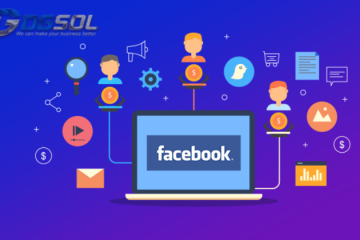Employee benefits are only one area where artificial intelligence (AI) is becoming more and more popular. Businesses are now using AI to improve Flexible Spending Accounts (FSAs) and Health Savings Accounts (HSAs), making them easier for consumers to use and more efficient. InComm Payment has been pivotal in driving this transformation by integrating AI-powered solutions into employee benefit programs. These advancements are not just technological upgrades but represent a shift towards more intelligent and user-centric healthcare benefits.
AI’s role in employee benefits is multifaceted. On one hand, it simplifies various administrative tasks, reducing the workload for HR departments. On the other, it provides employees with tools that offer personalized insights and recommendations. This dual approach ensures that both employers and employees benefit from an efficient and effective system. With rising healthcare costs and increasingly complex benefit structures, AI offers a way to streamline processes and improve overall satisfaction.
How AI Simplifies Account Management
Due to their complex nature, managing HSAs and FSAs can often be daunting. However, by automating administrative duties and offering insightful analysis, AI can expedite this process. Users can easily track expenses, manage receipts, and plan their healthcare spending without the usual hassle. With AI-powered systems, employees can focus more on their health and less on paperwork. For example, AI can automatically categorize expenses, match receipts with transactions, and alert users to upcoming deadlines.
Staff members save time as a result of this automation, which also lowers errors. Imagine not having to manually input every transaction or worry about misplacing a crucial receipt. AI takes care of these aspects, giving users a clear and organized view of their accounts. Furthermore, these systems frequently have user-friendly dashboards with real-time data displays, which facilitate decision-making about healthcare costs.
Enhancing User Experience and Engagement
Incorporating AI into employee benefit programs significantly enhances user experience. These AI-powered systems offer personalized recommendations, ensuring that employees maximize their benefits. User-friendly interfaces and real-time assistance make these tools indispensable for modern workplaces.
One of the standout features of AI-powered benefit programs is their ability to offer customized advice. For instance, if an employee frequently spends on specific medical services, the system might suggest similar but more cost-effective alternatives. This level of personalization ensures that employees get the most out of their benefits while also making financially sound decisions. Furthermore, these systems can send reminders for unused benefits, upcoming medical appointments, or even tips on how to save more efficiently.
Data-Driven Decisions for Better Health Outcomes
AI algorithms are very good at finding patterns in vast volumes of data. This capability allows for data-driven decisions that can lead to better health outcomes. These systems can offer tailored advice by analyzing spending habits and healthcare usage, helping employees make more informed choices. This proactive approach can significantly improve overall well-being and financial health. Such systems can even predict future medical expenses based on past behaviors, giving employees a head start in planning their finances.
The power of data analytics extends beyond just immediate benefits. Over time, these insights can help shape more effective health plans and wellness programs. For example, if data shows a trend in specific health issues within a company, the employer can introduce targeted wellness initiatives. This not only promotes better health but also reduces long-term healthcare costs. The ability to leverage data for such impactful decisions showcases the true potential of AI in transforming employee benefits.
The Benefits for Employers
Employers also stand to gain from integrating AI into their benefits programs. These advanced systems reduce administrative burdens and lower costs related to managing HSAs and FSAs. This efficiency can lead to more satisfied and productive employees, ultimately benefiting the organization at large. A report on how AI is being used to transform employee benefits highlights various success stories where both employers and employees have reaped significant benefits.
Moreover, AI systems offer enhanced transparency and compliance. With automated record-keeping and real-time reporting, employers can easily adhere to regulatory requirements, avoiding costly penalties. This transparency also builds trust with employees who can clearly see how their benefits are managed. Additionally, employers can use AI-generated reports to fine-tune their benefits offerings, ensuring they remain competitive and attractive to top talent.
Future Prospects and Innovations
The future of AI-powered employee benefits looks promising. Researchers are continually developing new tools and systems to further simplify the management of HSAs and FSAs. Enhanced predictive analytics, improved user interfaces, and greater automation are just a few innovations on the horizon. These advancements will likely lead to even more efficient and user-friendly benefit programs. Emerging technologies like machine learning and blockchain could add additional layers of security and functionality, making benefit programs more resilient and adaptable.
As AI continues to evolve, its applications in employee benefits will also expand. Future innovations might include virtual health assistants providing 24/7 support or wearable devices integrating with benefit programs to offer real-time health monitoring. These advancements will enhance the user experience and provide more comprehensive and personalized healthcare solutions. The continuous evolution of AI ensures that employee benefit programs will keep pace with changing needs and expectations.
Conclusion: A Win-Win for All
Incorporating AI into employee benefit programs offers numerous advantages for both employers and employees. The potential is vast, from simplifying account management and enhancing user experience to making data-driven decisions that lead to better health outcomes. As technology advances, we can expect even more innovative solutions that will continue improving how we manage and utilize employee benefits.
Ultimately, AI-powered employee benefit programs represent a win-win for all parties involved. Employees gain access to more personalized, efficient, and user-friendly tools, while employers benefit from reduced administrative burdens and cost savings. This collaborative approach ensures that everyone can maximize their healthcare benefits, leading to healthier, happier, and more productive workplaces.




